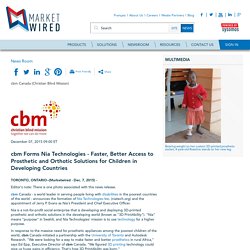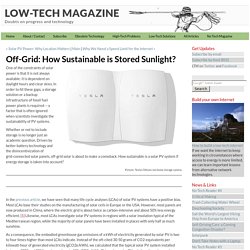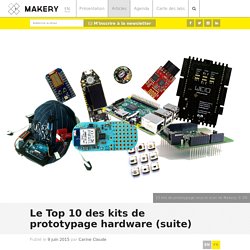

Prothèses bioniques : les liens utiles. L'innovateur Nicolas Huchet Nicolas Huchet a subi une amputation de l'avant-bras droit suite à un accident de travail en 2002.

Les tentatives de greffe ayant échoué, on l'équipe d'une prothèse haut de gamme bien au-dessus de ses moyens et, son handicap étant peu courant, mal remboursée. La solution, il la trouve en octobre 2012 lorsqu'il se rend à un forum consacré au numérique, à Rennes. L'association Bug y présente sa toute nouvelle imprimante 3D et les plans d'une main robot à faire soi-même... Gaël Langevin Gaël Langevin est le créateur du premier robot humanoïde réalisé grâce à une imprimante 3D. Le mot FabLab Un FabLab est un laboratoire de fabrication numérique. Wama, a young amputee, helps to trial 3D printing of prosthetics in Togo. Cbm Forms Nia Technologies - Faster, Better Access to Prosthetic and Orthotic Solutions for Children in Developing Countries. TORONTO, ONTARIO--(Marketwired - Dec. 7, 2015) - Editor's note: There is one photo associated with this news release. cbm Canada - a world leader in serving people living with disabilities in the poorest countries of the world - announces the formation of Nia Technologies Inc.

(niatech.org) and the appointment of Jerry P. Evans as Nia's President and Chief Executive Officer. Nia is a not-for-profit social enterprise that is developing and deploying 3D-printed prosthetic and orthotic solutions in the developing world (known as "3D PrintAbility"). In response to the massive need for prosthetic appliances among the poorest children of the world, cbm Canada initiated a partnership with the University of Toronto and Autodesk Research. Epp explains, "We decided to launch Nia as a separate enterprise, because we believe that developing innovative technologies to equip hospitals in poorer countries requires the full attention of a governance board and a leadership team.
Nia Technologies Inc. Blog.
MobileFablabContent. BionicoHand. 3D_Hands_Projects. OSCE Days 2015 Rennes // 11 au 15 Juin // #OSCEdays. How Sustainable is Stored Sunlight? Picture: Tesla's lithium-ion home storage system.

In the previous article, we have seen that many life cycle analyses (LCAs) of solar PV systems have a positive bias. Most LCAs base their studies on the manufacturing of solar cells in Europe or the USA. However, most panels are now produced in China, where the electric grid is about twice as carbon-intensive and about 50% less energy efficient. [1] Likewise, most LCAs investigate solar PV systems in regions with a solar insolation typical of the Mediterranean region, while the majority of solar panels have been installed in places with only half as much sunshine. As a consequence, the embodied greenhouse gas emissions of a kWh of electricity generated by solar PV is two to four times higher than most LCAs indicate. Instead of the oft-cited 30-50 grams of CO2-equivalents per kilowatt-hour of generated electricity (gCO2e/kWh), we calculated that the typical solar PV system installed between 2008 and 2014 produces close to 120 gCO2e/kWh.
Le Top 10 des kits de prototypage hardware (suite) Avec l’essor de l’Internet des objets, les kits de prototypage hardware ont la cote.

Makery vous propose un tour d’horizon des nouveautés 2015. Mini ou plutôt avec la bougeotte ? Les cartes de prototypage se multiplient et se spécialisent à grand renfort de campagnes de financement participatif. A tel point que les poids lourds de l’électronique leur emboîtent le pas. Makery en a sélectionné 10 pour leurs promesses et qualités, dont 7 petites nouvelles et 3 (déjà repérées fin 2014), qui confirment leur succès. Retrouvez ici notre Top 10 de décembre 2014 Sept cartes de prototypage à suivre de près Raspberry Pi 2 : la plus attendue Qu’est-ce que c’est ?
A quoi ça sert ? Comment ça marche ? Qui la fabrique ? Combien ça coûte ? En savoir plus sur le site de la Fondation Raspberry Pi. Médecine: les espoirs fous de l’impression 3D - 36.9° - TV - Play RTS - Radio Télévision Suisse.
3D_Health.